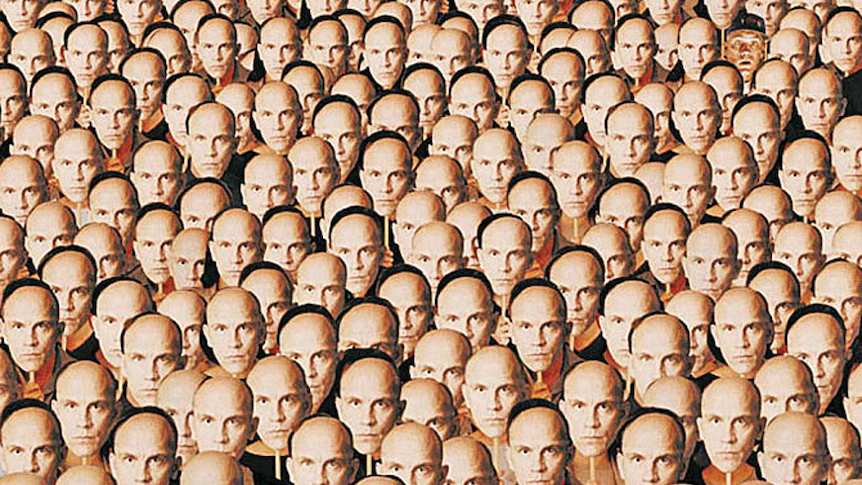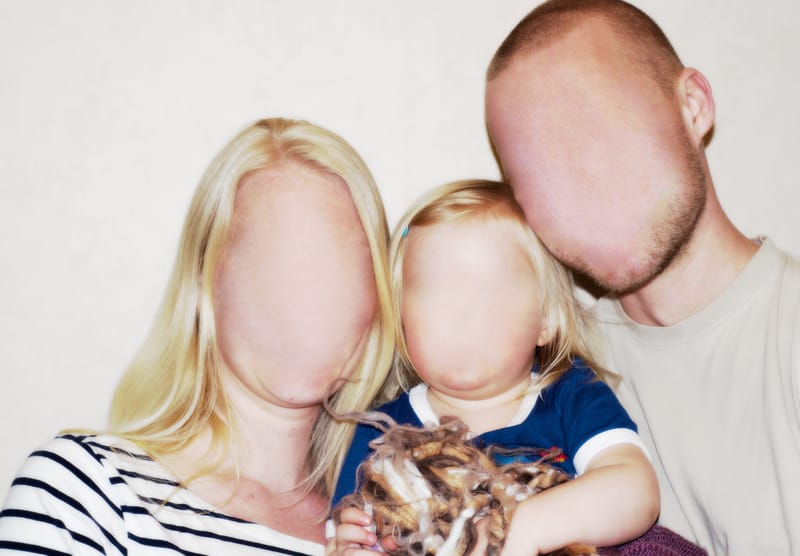
We’ve all gone through that embarrassing feeling when someone comes up to you while calling your name enthusiastically, while you look back at them with a blank stare. “It’s me Bobby. We worked together at so-and-so company. You sat across my desk for three years.” Of course, I remember you, Bobby. Who do you take me for? Some self-centered asshole? (yeaaah). Or perhaps the opposite situation happened to you when you were the one who wasn’t recognized back. As someone who has been on both sides of that situation, I can attest it sucks being in either person’s shoes.
Here’s the thing, though: some people fail to recognize other people’s faces all the freaking time because they have a neurological condition formally known as prosopagnosia, or face blindness. And a new study from the Harvard Medical School and the VA Boston Healthcare System suggests this condition — which can lead individuals to mistake strangers for people they know or to fail to recognize acquaintances — may be much more common than previously thought.
According to the study published in the journal Cortex, up to 2.5% percent of people, or more than 10 million Americans, may meet the criteria for prosopagnosia. The findings indicate that diagnostic criteria should be expanded to be more inclusive, which could lead to new diagnoses among millions who may have the disorder but don’t realize it.
Face blindness may be on a spectrum, just like autism

Joseph DeGutis, an associate professor of psychiatry at VA Bostonl, leads a lab dedicated to researching face blindness. Dr. DeGutis explains that recognizing someone’s face is an essential social signal, indicating that “you are important to me.” For individuals with prosopagnosia, socializing and networking can be challenging, and it can cause social distress and embarrassment. Furthermore, face blindness can affect individuals on the autism spectrum and can be a consequence of age-related cognitive decline.
Prosopagnosia recently came into the limelight when Hollywood actor Brad Pitt revealed last year that he’s literally face-blind.
“So many people hate me because they think I’m disrespecting them,” Pitt said in a 2013 interview with Esquire. “You get this thing, like, ‘You’re being egotistical. You’re being conceited.’ But it’s a mystery to me, man. I can’t grasp a face and yet I come from such a design/aesthetic point of view.”
Famous conservationist Jane Goodall also reportedly suffers from this condition. Goodall, who famously studies chimps, is also unable to distinguish some chimp faces from others, so her condition extends to non-human faces as well.
“I had no trouble with those who had obvious physical characteristics – unusual bone structure, beaky nose, extreme beauty, or the opposite. But with other faces I failed, miserably,” she said. “Sometimes I knew that people were upset when I did not immediately recognize them – certainly I was. And because I was embarrassed, I kept it to myself,” Goodall writes in her autobiographical book.
For those who experience it, the social and emotional consequences of prosopagnosia can be debilitating. Now, a new study led by DeGutis found that the condition may be much more prevalent than thought.
The researchers found that face blindness lies on a spectrum, which can range in severity and presentation, rather than representing a discrete group. Bearing this new reality in mind, the researchers have made new diagnostic suggestions for identifying mild and major forms of prosopagnosia based on guidelines for other major and mild neurocognitive disorders in the DSM5, the 5th edition of the Diagnostic and Statistical Manual of Mental Disorders.
The study results are based on a web-based questionnaire and tests administered to 3,341 individuals. Participants were asked whether they experience difficulties recognizing faces in their everyday lives. Then, they were administered two objective tests to determine whether they had difficulties learning new faces or recognizing highly familiar, famous faces.
The researchers found that 31 individuals out of the 3,341 had major prosopagnosia, while 72 had a milder form. They also observed that there were no neatly divided discrete groups of people with poor or good ability to recognize faces. Rather, the ability to recognize faces appeared to lie on a continuum.
Recognizing face blindness as a neurological condition
The study’s findings have implications for diagnosing and treating individuals with face blindness. The researchers suggest that diagnostic criteria for the condition should be expanded to include those with milder forms, as they may still experience significant difficulties recognizing faces. The study also suggests that training programs and therapies for individuals with face blindness could be tailored based on the individual’s place on the spectrum of the condition.
Humans typically have a remarkable ability to recognize familiar faces with little effort, thanks to specific perceptual processes, memory processes, and specialized brain mechanisms and regions. However, these processes can break down in individuals with prosopagnosia.
Dr. DeGutis emphasizes the importance of using a combination of self-reported daily-life difficulties and validated objective measures when diagnosing prosopagnosia. It can be challenging to judge one’s abilities, and relying solely on objective lab measures may not reflect everyday life. By expanding the diagnostic criteria, clinicians and individuals with prosopagnosia can take proactive steps to reduce the negative impacts of this condition on daily life.
In a world where social isolation is on the rise, fostering and maintaining social bonds and good face-to-face interactions are more important than ever. Face blindness may not be life-threatening, but its effects on daily life and social interactions are significant. With more research, the study’s authors believe that a better understanding of the spectrum of face blindness could lead to improved treatments and outcomes for those with the condition.


